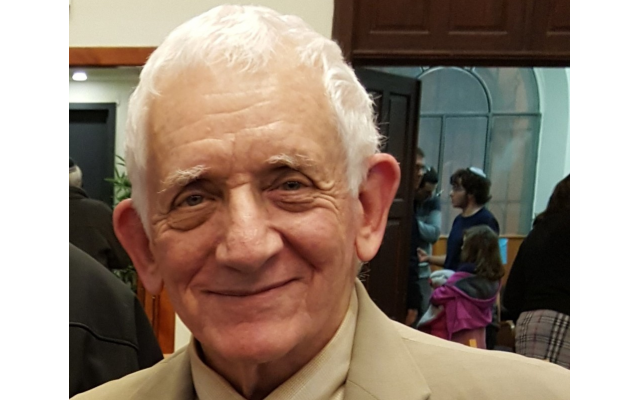Southern Sukkot: Sugarcane and Pomegranates
A Sukkah is a unique sight for those who've never seen one before and Rabbi David Geffen does a deep dive into the South's early exposure to the tradition.
Rabbi David Geffen is a native Atlantan and Conservative rabbi who lives in Jerusalem.
When professor Marcie Cohen Ferris was researching her book on Southern Jewish cuisine, “Matzoh Ball Gumbo,” she discovered that in the South Carolina low country from the 1920s on, the Levinson family decorated its sukkah with sugarcane and pomegranates. Those two items were so plentiful that the sukkah almost had an Eretz Yisrael dimension when completed.
While Sukkot has been observed in the USA since 1655, initially via the “cabanas” of the Sephardim, as documented by professor Jacob Rader Marcus, an interesting development occurred in the late 1890s when Eastern European immigrants began to settle in various Southern communities.
Many of them brought Sukkot traditions from their former homelands which had not been practiced in the former Confederate states because the Reform movement dominated. In fact, the number of lulavim and etrogim in Norfolk and Richmond, Va; Columbia and Charleston, S.C.; Savannah, Atlanta and Augusta, Ga.; Birmingham, Ala.; New Orleans, La.; Mississippi towns; Nashville, Tenn.; and Jacksonville, Fla. in 1901, numbered less than 50 sets.
In 1889, the Atlanta Constitution had a headline reading: “Feast of Tabernacles – A Big Day with Atlanta’s Hebrews and Children.” That story on Oct. 10 described the harvest festival in which a booth was built to remind the Israelites of the wandering in the desert. “For the holiday, The Temple on Pryor Street has a festive booth right next to the Holy Ark; the Ashkenazim have outdoor decorated shacks near their homes in the Gilmer Street area. The ‘lulof’ will be used.”
By 1900, the Sukkot holiday in the South was using the symbols in a different fashion. In the newspapers in Athens and Macon, Ga., a similar story appeared. “The Sukkot festival is meant not as a season of self-congratulation gained in the products of the farm and gained in business, but as a time for thought on the larger social issues.” More than likely the story came out of New York and was picked up by the small-town papers, where only a few Jews lived. For some American Jews, it was clear how the symbols of the holiday might be interpreted for the contemporary period.
Jumping back and forth during the first 20 years of the 20th century, it can be noted that the American rabbis began to use the holiday for focusing on the issues of the day. In the Athens Banner, a daily Georgia paper, the headline read on Oct. 4, 1914, “Adath Moshe, Tabernacles – Day of Prayer for Peace.” In the story, this point was made: “At the service, there will be special significance to the Tabernacle’s day of observance this year. There will be a prayer for peace in Europe in the synagogue. The congregants will enter heartily, with more than usual interest into the plan of peace suggested by President Woodrow Wilson.” During the fall that year the beginning of disturbances in Europe ultimately leading to World War I had begun. Wilson, “a peacenik,” was trying to develop a widespread mindset in his nation which would encourage the cessation of hostilities. Jews were swept into this thinking during Sukkot that year and for the next few years to come.
In the book by professor Kimmy Caplan of Bar-Ilan University on the sermons of the early Orthodox rabbis in the USA 1880-1930, he shows how these rabbis quickly became a part of the American scene. They spoke about the observance of mitzvot, but they also tried to show how the traditional holidays could play a role in American life. More than likely, it was the efforts of the Agudas HaRabbonim rabbinical organization in the USA that awakened an interest in American Jews in lulav and etrog sets before World War I. There are a few black and white drawings of American Jews holding these traditional items as early as the second decade of the 20th century, but paintings of Jews in the U.S. practicing this ritual come much later. The pioneer siddur publisher Joseph Magil of Philadelphia did illustrate some of his books with photographs of individuals practicing this ritual.
In Atlanta at The Temple in 1910, Rabbi David Marx took great pride in “the pulpit being beautified with an arbor decorated with seasonable fruits.” After the service, the children took the produce to the Atlanta Jewish Orphans’ Home and to a local neighborhood house.
There was also a reflection in the South of what was occurring in the more traditional world. In 1912 in Savannah, the paper noted. “Orthodox Jews erect little bowers of branches and foliage in their houses and outside of their synagogues, where they say their prayers of thanksgiving.” In Athens in 1911, the story explained that the “Israelite left his house for a week of festival and lived through, as it were, an important epoch of his people’s history.” Now the key point, “this was a way of replenishing the springs of Jewish sentiment.”
For my grandfather Rabbi Tuvia Geffen’s first Sukkot in Atlanta a century ago, the Atlanta Constitution carried the following item in 1911. “Though a sukkah is small and typically does not protect well against the increasingly harsh fall weather, Jews are expected to be joyous and grateful for all that God has provided. The emphasis on fruits and vegetables in the decoration of the sukkah and in the meals reinforces the themes of abundance and hospitality in this harvest holiday.”
David Geffen is a native Atlantan and former Conservative rabbi living in Jerusalem.




comments